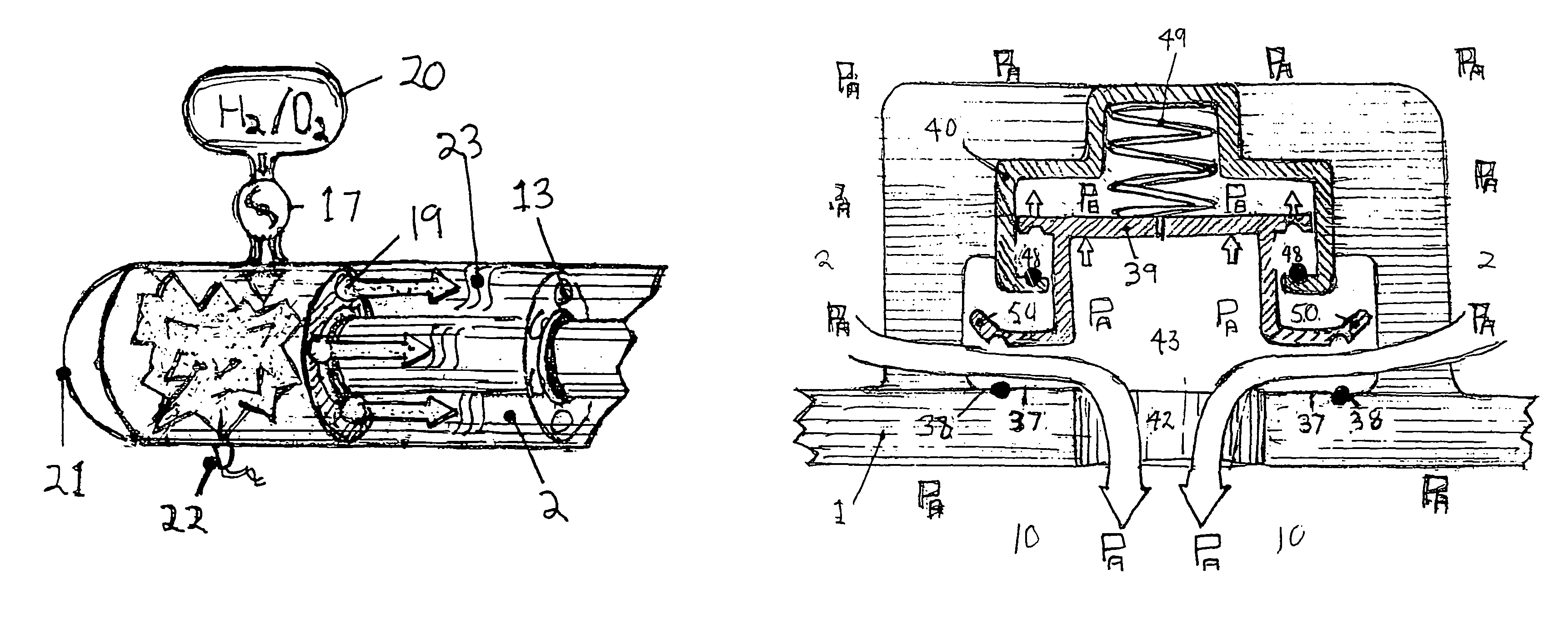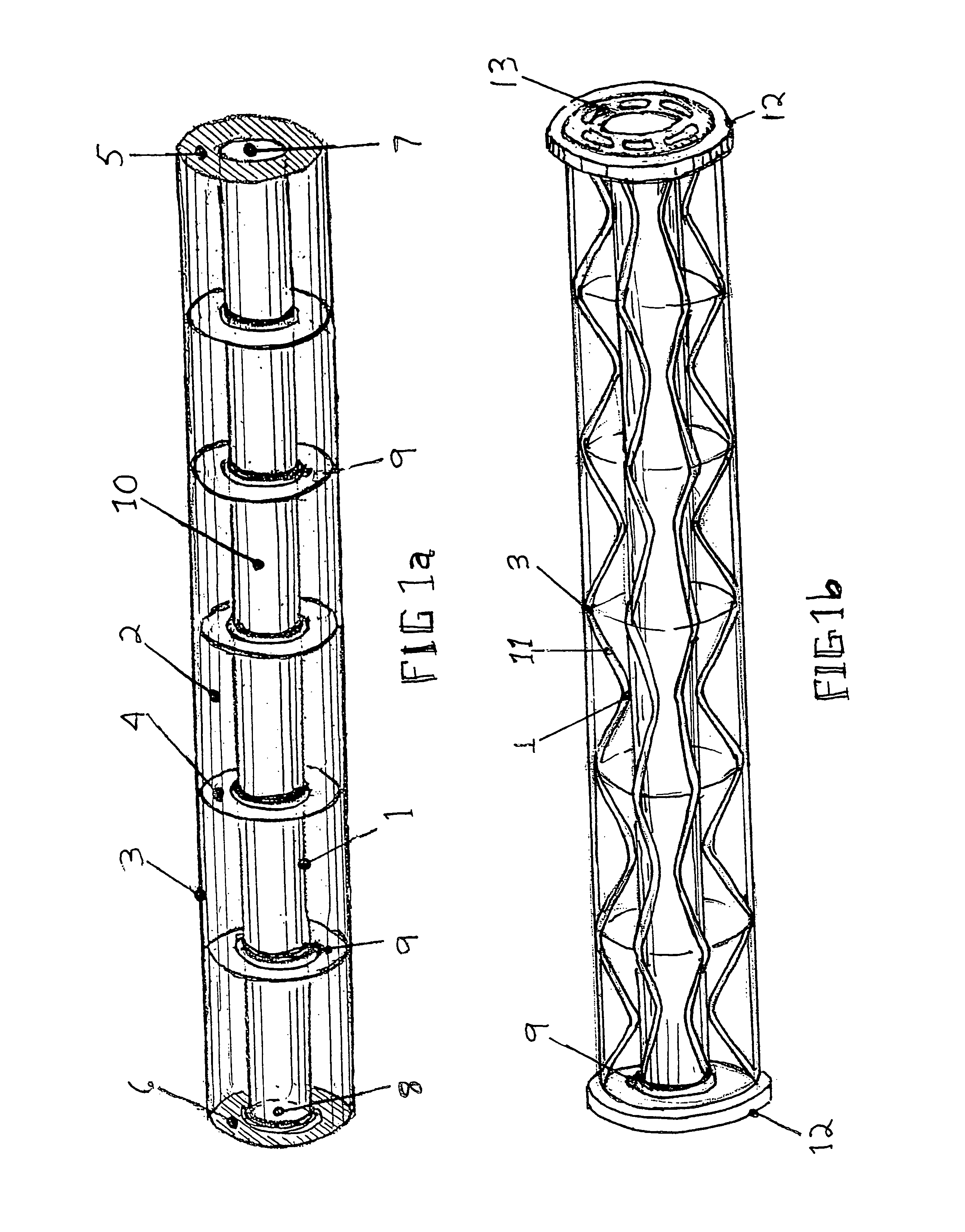Multivalve hypervelocity launcher (MHL)
a hypervelocity launcher and multi-valve technology, applied in the direction of weapons, white arms/cold weapons, weapons, etc., can solve the problem of short distance of travel of propelling gas to the base of the projectile, and achieve the effect of reducing the cos
- Summary
- Abstract
- Description
- Claims
- Application Information
AI Technical Summary
Benefits of technology
Problems solved by technology
Method used
Image
Examples
Embodiment Construction
[0074]FIG. 1a shows this basic structure of the MHL system. This includes the inner barrel 1 which contains the projectile during the launch sequence; the AGC, axial gas chamber 2 formed by the IB, inner barrel 1 and the OC, outer casing 3; with internal bulkheads 4 other structures that align and connect the inner barrel and the outer casing, end closure bulkheads fore 5 and aft 6.
[0075]The muzzle end of the barrel can be closed off with a frangible cap 7 or fast acting retractable valve or cover that opens just prior to exit of the projectile and closes after exit of the projectile, to conserve the pressurized Helium or Hydrogen. At the other end is the breech assembly 8 that allows insertion of the projectile, and when closed and sealed, allows the inner barrel chamber IBC to be evacuated. Activation valves 9 shown at each internal bulkhead, when triggered, allow high-pressure gas in the AGC 2 to flow into the IBC 10 behind the projectile. FIG. 1a shows a composite of the major e...
PUM
 Login to View More
Login to View More Abstract
Description
Claims
Application Information
 Login to View More
Login to View More - R&D
- Intellectual Property
- Life Sciences
- Materials
- Tech Scout
- Unparalleled Data Quality
- Higher Quality Content
- 60% Fewer Hallucinations
Browse by: Latest US Patents, China's latest patents, Technical Efficacy Thesaurus, Application Domain, Technology Topic, Popular Technical Reports.
© 2025 PatSnap. All rights reserved.Legal|Privacy policy|Modern Slavery Act Transparency Statement|Sitemap|About US| Contact US: help@patsnap.com



